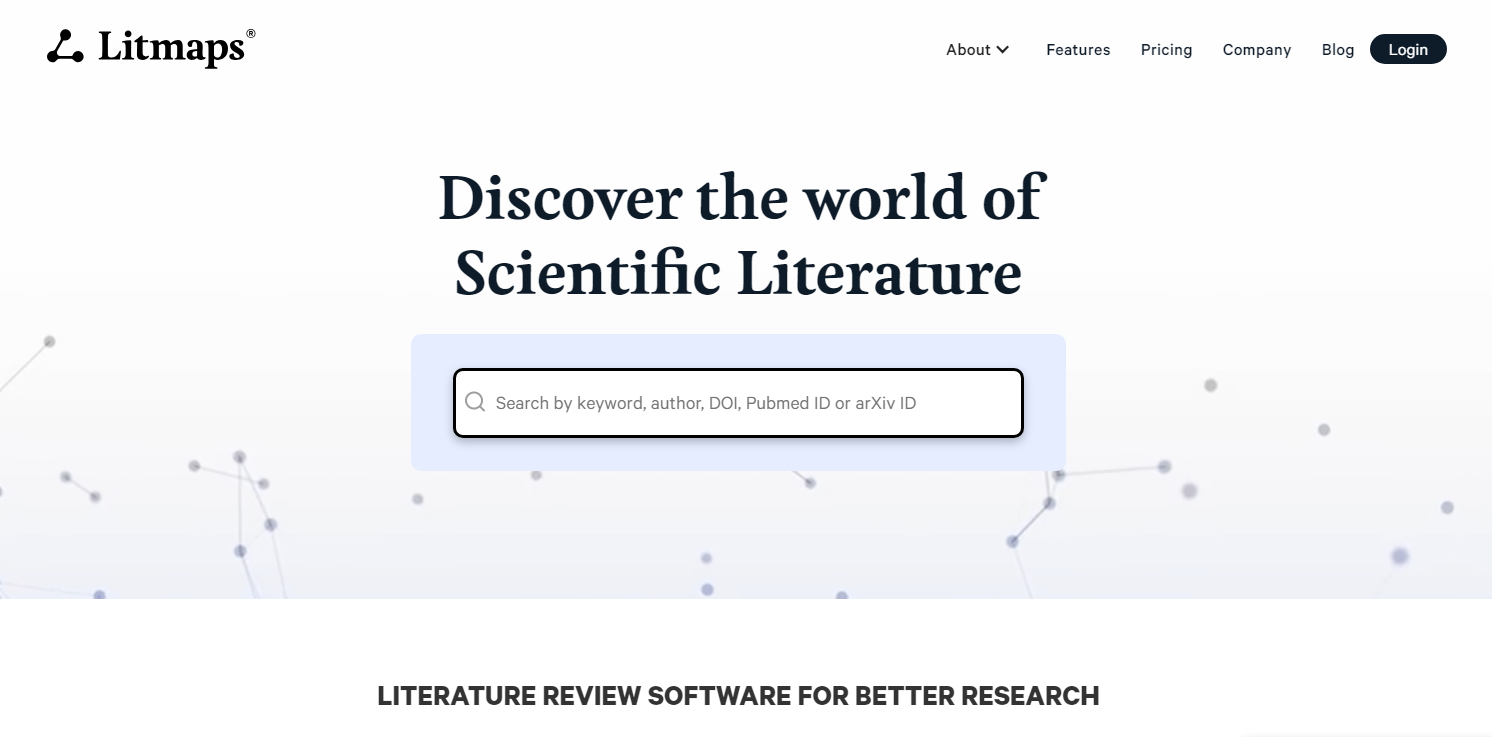In the ever-evolving landscape of academic research and data visualization, finding efficient ways to manage, track, and interpret scientific literature is crucial. Litmaps emerges as a cutting-edge platform designed to simplify this process for researchers, academics, and professionals. This review explores the platform’s key features, benefits, and its potential to reshape how we navigate and manage scientific knowledge.
What is Litmaps?
Litmaps is a research tool that specializes in interactive literature mapping, allowing users to visually organize and track scientific papers relevant to their work. By providing a dynamic and real-time connection to academic literature, Litmaps ensures users stay informed about the latest developments in their chosen fields.

Unlike traditional methods of browsing academic databases, Litmaps takes a proactive approach by offering customizable alerts and visualizations, enabling researchers to focus on their core work rather than sifting through irrelevant papers.
Key Features of Litmaps
1. Dynamic Literature Mapping
Litmaps transforms static lists of references into interactive, customizable maps. These maps visually represent connections between academic papers, offering insights into how research evolves over time. This feature provides users with a more intuitive understanding of relationships between studies, identifying trends and key contributions.
2. Customizable Citation Alerts
One of Litmaps’ standout features is its tailored citation alert system. Users can set up alerts for specific papers or topics and receive notifications when new citations or related work are published. This functionality keeps researchers up-to-date without manual tracking, saving significant time.
3. Seamless Integration with Academic Databases
Litmaps integrates with widely-used academic platforms such as Google Scholar, CrossRef, and Semantic Scholar, ensuring comprehensive access to peer-reviewed articles and citations. The platform’s database is vast and continually updated, guaranteeing that users have access to the most relevant and recent information.
4. User-Friendly Interface
The platform offers an intuitive interface that caters to both tech-savvy users and those new to literature mapping. From creating personalized maps to exporting data for presentations or publications, Litmaps simplifies what can otherwise be a complex process.
5. Collaborative Tools
Litmaps is designed with collaboration in mind. Teams can share maps, insights, and updates, fostering a cooperative research environment. This feature is especially beneficial for research groups working across institutions or disciplines.

Who Can Benefit from Litmaps?
1. Researchers and Academics
Litmaps is an invaluable tool for academics seeking to track the latest publications in their fields. Whether working on a literature review, thesis, or grant proposal, the platform streamlines the process of identifying and organizing relevant research.
2. Industry Professionals
In fields like pharmaceuticals, biotechnology, and engineering, staying updated on scientific advancements is critical. Litmaps enables professionals to monitor innovations and competitor research, ensuring they remain ahead in their industries.
3. Students and Educators
Students writing term papers or educators compiling reading lists will appreciate Litmaps’ ability to visually organize academic content. The platform makes it easier to identify seminal papers and the progression of ideas over time.
Advantages of Using Litmaps
Efficiency and Time Savings
Traditional literature reviews can be time-consuming and prone to information overload. Litmaps eliminates these challenges by automating citation tracking and organizing data into digestible formats.
Improved Research Insights
The visual representation of literature connections often reveals insights that are difficult to discern from linear lists. Researchers can identify influential works, emerging trends, and research gaps more effectively.
Real-Time Updates
Litmaps’ proactive alerts ensure that users are always aware of new developments in their fields. This feature is particularly valuable in fast-paced disciplines where staying updated is critical.
Collaboration Opportunities
Shared maps and data foster collaboration, making Litmaps a versatile tool for research groups and academic teams.
Litmaps Pricing and Accessibility
Litmaps offers flexible pricing plans tailored to individual researchers, academic institutions, and corporate users. The free version provides access to basic features, including the creation of limited literature maps and citation tracking. For advanced functionality, such as larger map sizes, team collaboration, and premium alerts, users can opt for the paid plans.

With competitive pricing and robust features, Litmaps ensures affordability and accessibility for a broad spectrum of users. Its free tier is ideal for students and early-career researchers, while its premium options cater to advanced academic and professional needs.
Why Litmaps Stands Out
Litmaps differentiates itself through its emphasis on visual and dynamic literature management. By combining cutting-edge technology with a user-centric design, the platform addresses common pain points faced by researchers. Its ability to simplify complex processes, coupled with its focus on collaboration and proactive updates, makes Litmaps a standout solution in the academic technology space.
Conclusion: Elevating Research with Litmaps
Litmaps is more than just a literature tracking tool—it’s a comprehensive research companion designed to optimize how we engage with academic content. Its innovative features, coupled with an intuitive interface, make it a must-have for researchers, students, and professionals.
For those looking to stay ahead in their fields and gain deeper insights into the ever-expanding world of scientific literature, Litmaps offers a solution that is as dynamic as it is practical. Explore Litmaps today and experience the future of research management.



